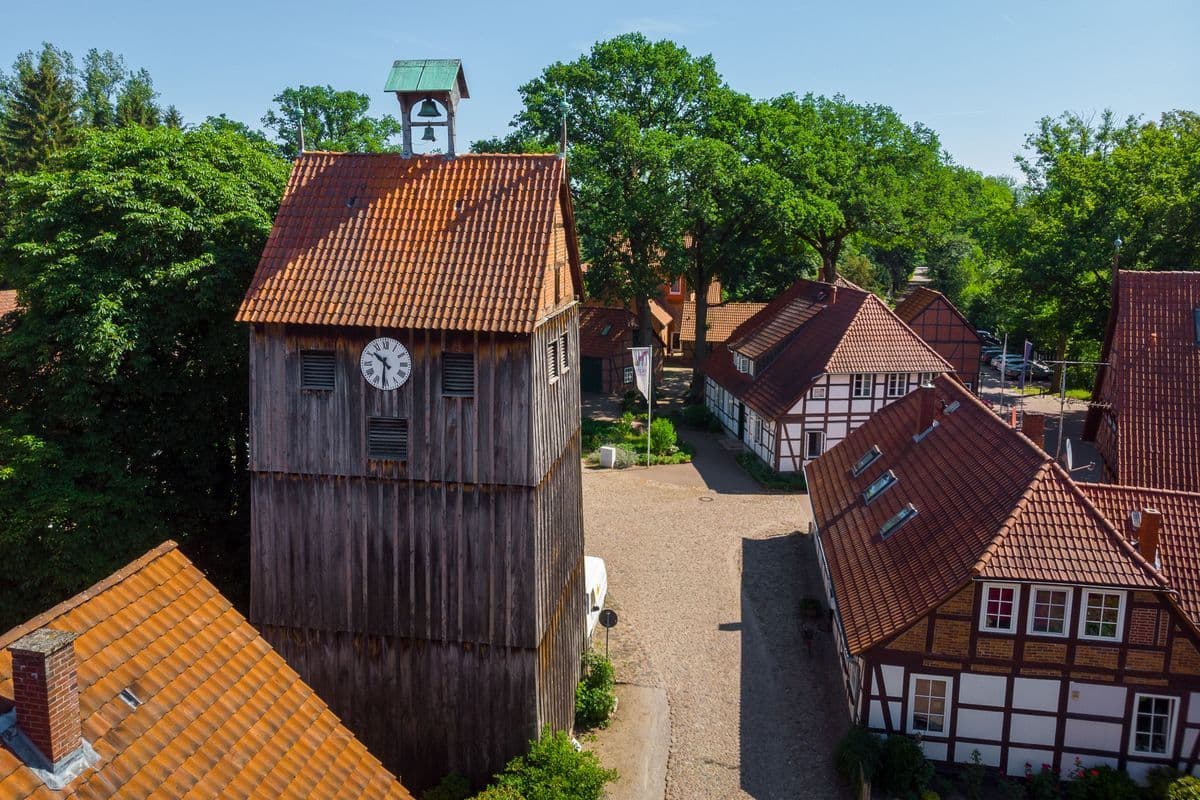




Ende des 14. Jahrhunderts errichtete man den Wienhäuser Glockenturm auf eine Art und Weise, die in Norddeutschland recht häufig anzutreffen ist. Ein freistehender, mit Holz verschalter Turm wurde etwas abseits der Kirche platziert. Die Stabilität der Glockenstube konnte durch eine abschließende Fachwerkkonstruktion erhöht werden.
Der Glockenturm bietet dem Betrachter ehedem ein standhaft trutziges Äußeres.
Würde der Glockenturm Geschichten erzählen können, so würde er berichten von fröhlich schwatzenden Taufgesellschaften, von festlichen Hochzeitszügen, aber auch von vielen traurigen Ereignissen. Rund um den Glockenturm befand sich von 1534 bis 1798 der Friedhof.
Noch heute, ob beim sonntäglichen Kirchgang oder auf dem Weg nach Hause, oft streift der Blick den alten Glockenturm ganz so wie einen alten Bekannten - schön, dass wir uns sehen!
SANIERUNG
Doch so ganz spurlos ist die Zeit nicht vorbeigegangen an dem alten Vertrauten. Zu Beginn des 18. Jahrhunderts erwies sich die hölzerne Konstruktion als derart marode, dass eine Grundsanierung nötig geworden war. Durch eine Kollekte der Gemeindeglieder konnten die finanziellen Mittel beschafft werden.
DIE TURMUHR
Interessant war auch die Konstruktion der Turmuhr, die heute recht archaisch anmutet. Die einfache Mechanik der Uhr wurde betrieben mittels an langen Seilen aufgehängten Feldsteinen. Kamen diese dem Erdboden bedrohlich nahe, so mussten sie wieder hochgezogen werden. Dies war immer Aufgabe der treuen Küster gewesen, bis die Uhr endlich einen elektrischen Antrieb erhielt.
DREHARBEITEN
Und noch eine spannende Geschichte könnte der Glockenturm erzählen: "Der Glockenturm als Flimset". Im Jahre 1947 drehte man hier einige Szenen des Films "Wege im Zwielicht" von Gustav Fröhlich.
Bei einem Spaziergang durch den historischen Ortskern Wienhausens ist immer noch ein wenig davon zu spüren, wie es in vergangenen Zeiten gewesen war, als die Menschen "die Zeit" als Maß aller Dinge noch unbeachtet ließen.
(alle dem Text beigefügten Fotos sind urheberrechtlich geschützt)
